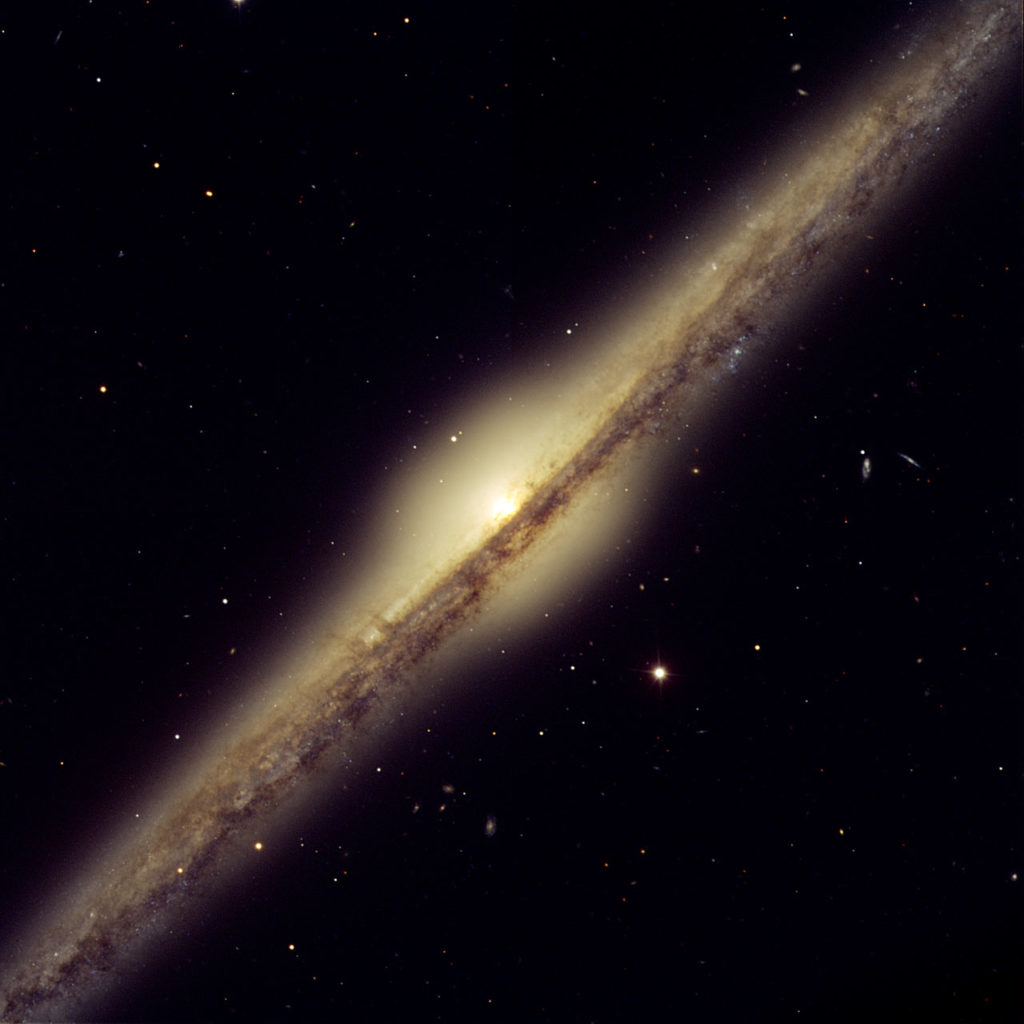
The great amateur astronomer Leslie Peltier once suggested a cure for many of the world’s problems is simply “one gentle dose of starlight to be taken each night just before retiring”. If you feel the need for a little starlight these days, there is no better bang for your buck than looking at galaxies. Northern spring is the perfect time for observing these immense collections of billions of stars, hundreds of which lie within easy reach of a small telescope (thousands if you’re using a camera instead of an eyepiece).
In images, face-on spiral galaxies are arguably more beautiful than edge-ons, but their low surface brightness makes them hard to see visually with small-to-mid-sized scopes, especially in anything but very dark sky. The higher surface brightness of edge-on spirals make them easier to see, and their glowing splinter-shaped appearance gives them their own allure. These galaxies also have historical scientific importance because astronomers in the early 20th century measured their rotation rate to try to understand the nature of these immense ‘island universes’.
After recently emerging from a long winter, I’ve been staying up all day (to finally see some Sun) and most of the night to do a little “snapshot astrophotography” to capture a few of the brighter edge-on galaxies. Here are three of my favorite edge-ons, plus one ‘bonus’ galaxy…
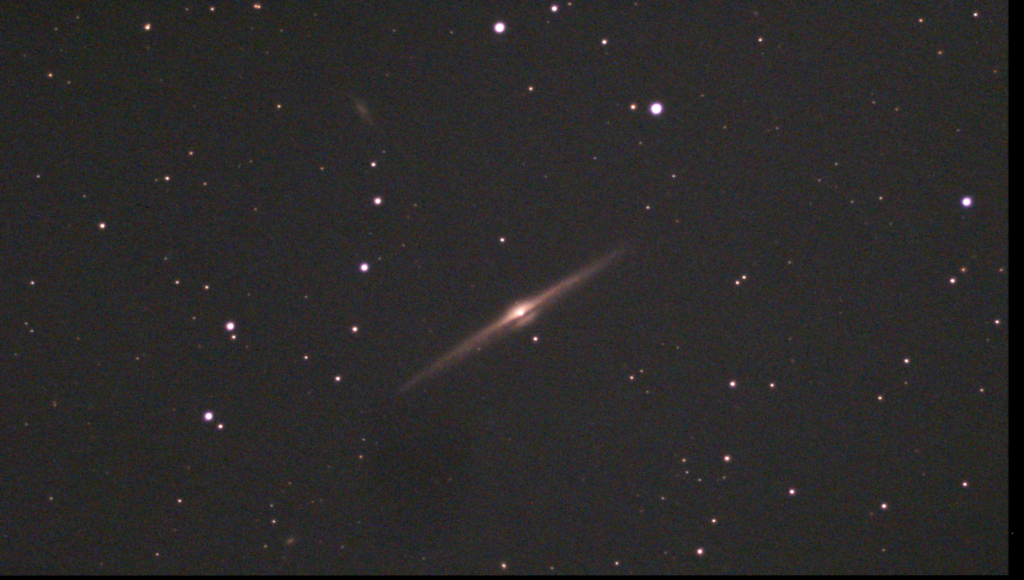
NGC 4565
After decades of stargazing, I still have a soft spot for NGC 4565. Sometimes called the Flying Saucer Galaxy, this little gem in the constellation Coma Berenices is just 8 degrees from edge-on and exhibits a beautiful symmetry and relatively high surface brightness. In dark sky, this 10th-magnitude galaxy pops out in a 4-inch scope. With an 8-inch or larger scope you can see the dark central dust lane formed by the sooty exhalations of generations of long-dead stars. This galaxy looks very much like our own Milky Way would appear if viewed from the side. See the image at top for a close-up of this big galaxy.
At an apparent diameter of 15′, NGC 4565 appears large for a galaxy. It’s about 42 million light years away, corresponding to a real diameter of some 100,000 light years. The galaxy is a member of the relatively small Coma I galaxy cluster which, like many galaxies in this part of the sky, is slowly moving towards an eventual merger with the much larger Virgo cluster, the large cloud of galaxies between the stars Denebola and Vindemiatrix.
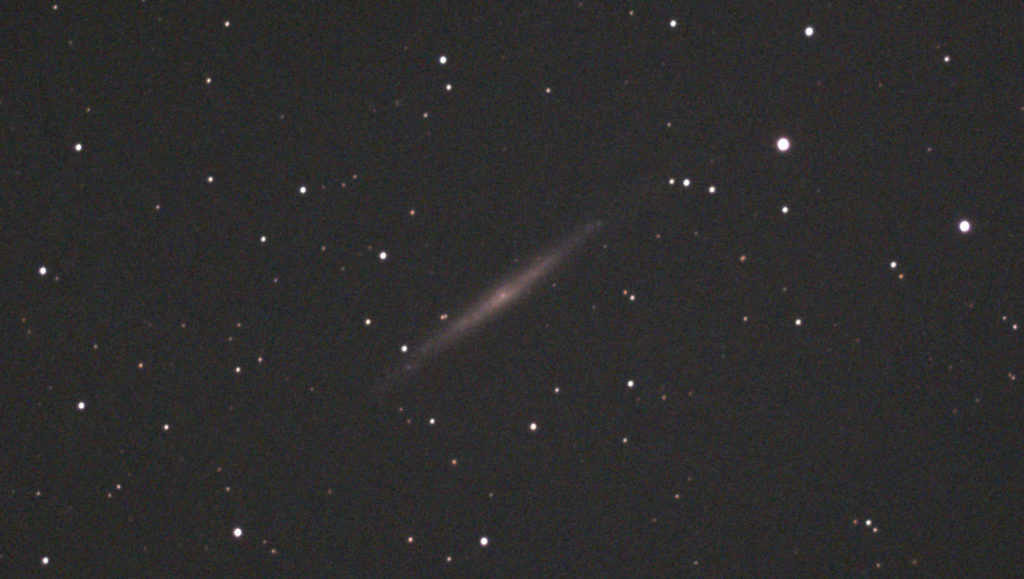
NGC 4244
Now to NGC 4244, another 10th-magnitude jewel in the constellation Canes Venatici under the handle of the Big Dipper. Also cataloged as Caldwell 26, this edge-on galaxy is far looser and more irregular than NGC 4565, but it appears about the same size. It’s also closer, just 14 million light years away, implying that it’s intrinsically smaller than NGC 4565. It is sometimes called the Silver Needle galaxy, and in a 4-inch or larger telescope that’s exactly what it looks like.
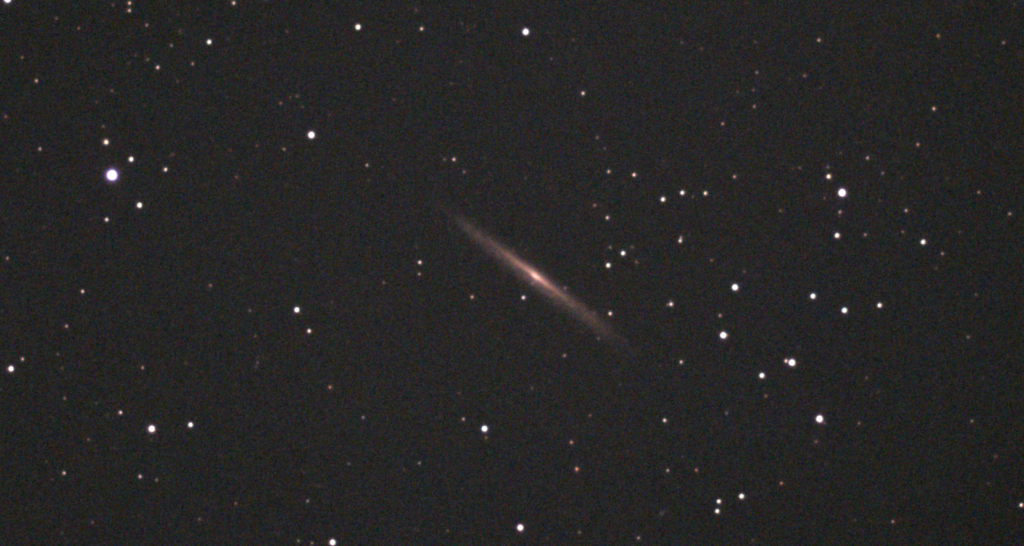
NGC 5907
Another galaxy, another analogy to slender, sharp object. The 11th-magnitude Knife Edge or Splinter Galaxy (NGC 5907) in the constellation Draco belongs to the small NGC 5866 group of galaxies and lies at a distance of 50 million light years. Judging by the position of the dust lane, this spiral isn’t quite as close to edge-on as NGC 4565. NGC 5907 is notable for its slightly warped disk visible in detailed long-exposure images (see here, for example). This warping is a consequence of a dwarf galaxy ingested by the Knife Edge which ripped the smaller galaxy apart and formed a stream of stars extending more than 150,000 light years from the galaxy’s disk. NGC 5907 spans an apparent size of about 13’ and has a surface brightness that puts it within reach of a small scope.
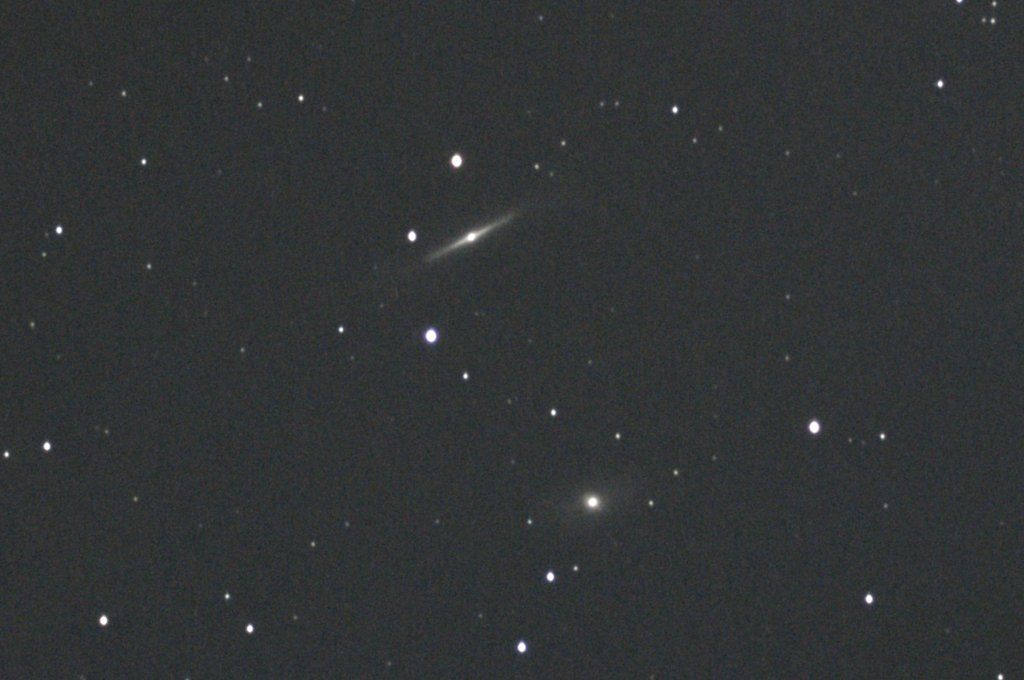
Bonus Object – NGC 4762
While not strictly an edge-on spiral, NGC 4762 is most certainly a nearly perfect edge-on galaxy of some kind. It’s a strange object, apparently devoid of a dust lane. It may be a lenticular galaxy that’s merged with a much smaller galaxy. In a telescope, the galaxy is amazingly slender and well defined with a remarkably bright nucleus.
A bona fide member of the Virgo cluster, NGC 4762 lies in the constellation Virgo just two degrees west and north of the star Epsilon Virginis. Dubbed the ‘Paper Kite’ galaxy by Stephen J. O’Meara, this 10th-magnitude galaxy lies at a distance of 65 million light years and spans about 9’ from our vantage point.
***
There are plenty more edge-on spirals in the northern spring sky, but these four are among the most accessible. Use your favorite star atlas to find these galaxies and make a plan to see them for yourself. If you don’t have an atlas handy, Stellarium Web Online works in a pinch to help you locate these objects.
Share This: